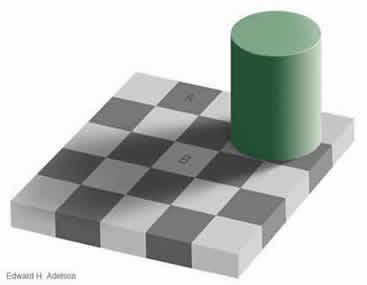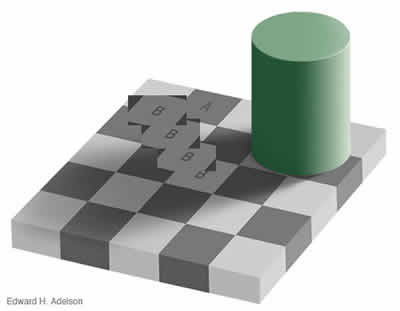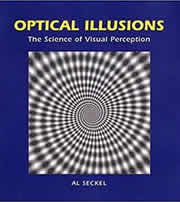Illusion and art:
Playing tricks on the viewer
Can you believe you eyes?
If you understand how people perceive things, you can be a better artist. In fact, you can make the viewer see things in your paintings that aren't really there.
Optical illusions have fascinated people for a long time, and there's a wealth of information about how we actually see things, as well as how we think we see things. If you ignore the research, your paintings may not be as effective as they could be.
It's all relative
Colors are important. Shapes are important. Values are important. But what may be most important is how these three elements are used together. For example, the simple act of putting a light color or value next to a dark area will emphasize the light area. And that can be a good thing if that's what you're trying to do.
But did you know that placing the same color and value in two different areas can make those identical colors and values look quite different? Just look at this:

Which is darker, A or B?
If you're a fan of illusions, you can probably guess that they're the same. Really, they are.
Here's an edited version with square B copied and turned into a trail up to square A. If you follow the trail, you can see that there's only one color and value.

What's the point?
If you're thinking of value and color, you're on the right track. But you must also consider how values and colors relate to other things.
copyright James Stephens
All rights reserved
More art books and other things from Amazon. Just click this link:


